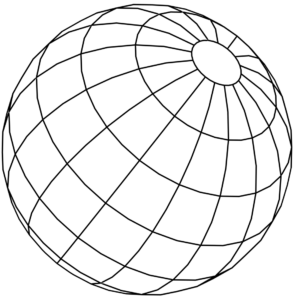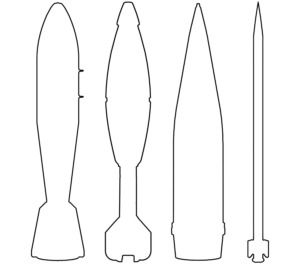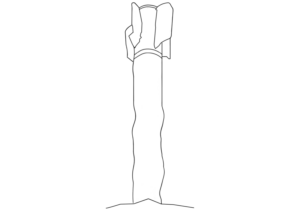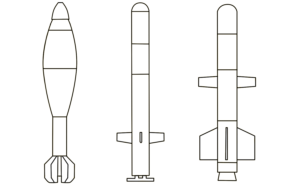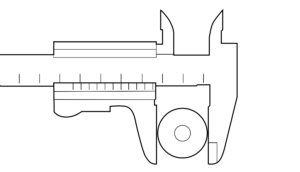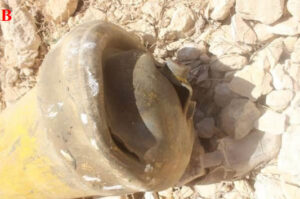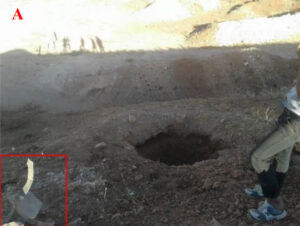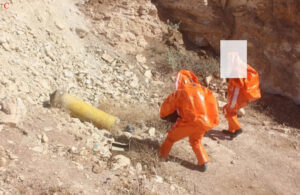3 results
Analyst Note:
This image shows an impact crater, as well as remnants of the frame or ‘cradle’ (red box) that was fitted to the gas cylinder. Cradles associated with this type of Syrian Government chemical munition typically feature fins to help orient the cylinder as it falls, and features to assist with loading the cylinders into aircraft for deployment, such as wheels and lifting lugs. (ARES)
Analyst Note:
This image shows an industrial gas cylinder that was reportedly dropped by a helicopter over Kafr Zeita on 1 October 2016. The gas cylinder ruptured on impact with the ground, dispersing its payload of chlorine gas. (ARES)
